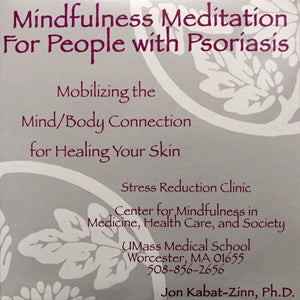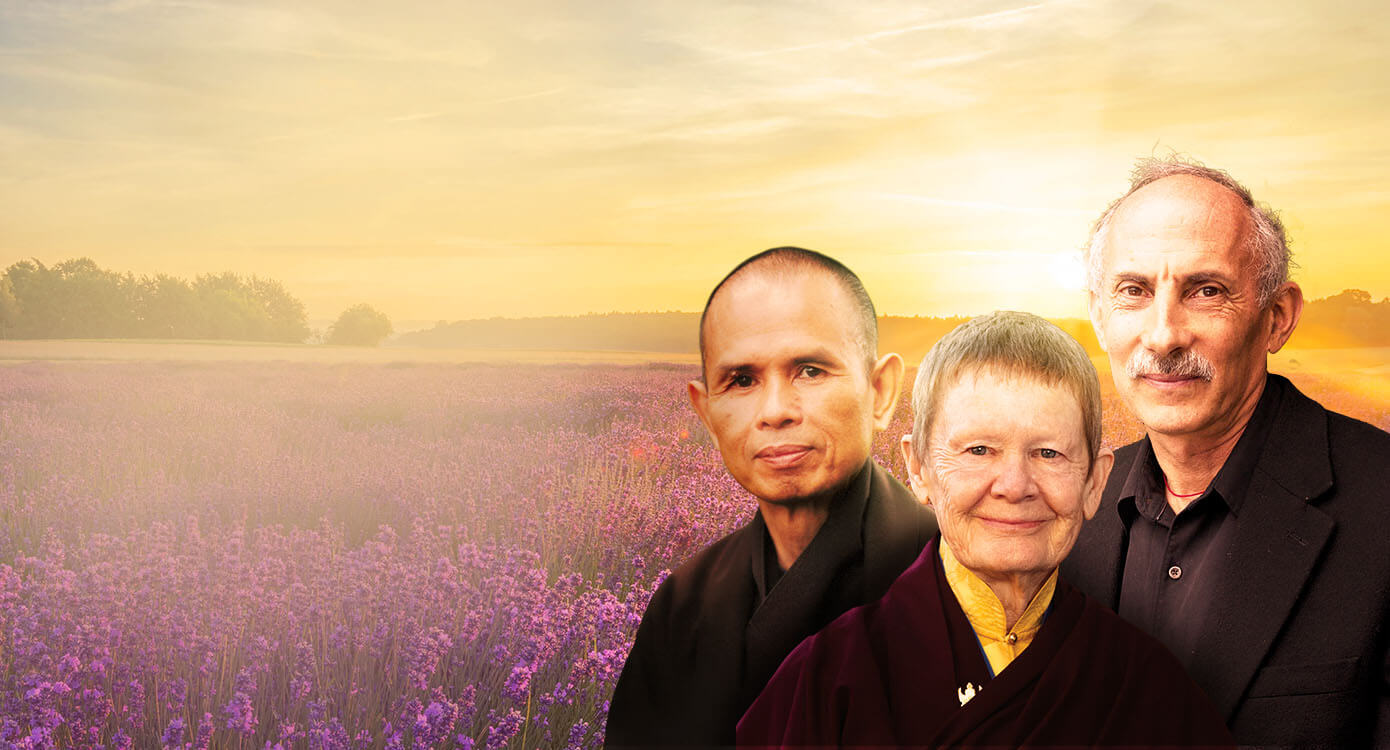Anxiety often surfaces in subtle yet persistent ways: a tight chest before opening a difficult email, a flood of thoughts when trying to fall asleep, or the lingering tension after an uncomfortable conversation. At Sounds True, we honor these experiences without rushing to fix or silence them. We explore how mindfulness for anxiety can become a steadying presence, a way of meeting ourselves with curiosity, kindness, and breath. By noticing the body’s signals with openness, we begin to interrupt old patterns of fear and reactivity. Each time we pause and anchor attention in the present, anxiety loses some of its grip. Over time, this gentle practice builds resilience, helping us respond to challenges with greater steadiness and compassion.
How Mindfulness Helps You Witness Instead Of React
In moments of stress, the instinct is often to run: mentally, emotionally, or physically. Mindfulness doesn’t ask you to solve or suppress your anxiety. Instead, it gently guides you to witness what’s present. That might sound simple, but it can shift your entire relationship with discomfort.
When anxiety rises, mindfulness invites you to pause: breathe into the tightness in your body, notice the rapid thoughts, and name what’s happening. Even saying “This is anxiety” out loud can soften the intensity. Over time, you begin to see your anxious moments less as enemies and more as signals. If you're looking for ways to begin this practice, we offer a free audio experience to help you relieve anxiety and depression using guided presence and embodied awareness.
Mindfulness Techniques To Reground When Life Feels Too Much
While you may not always have the time or space for a full mindfulness session, short pauses can re-anchor your body and mind. Try a few mindfulness techniques for anxiety the next time tension starts to build:
- Three-breath reset: Pause for three slow, deliberate breaths. Feel the inhale move through your chest, the exhale soften your belly. This simple act can signal safety to your nervous system.
- Name and feel: Say what you're experiencing. “My jaw feels tight.” “My thoughts are rushing.” Naming it can help you stop bracing against it.
- Return to sensation: Notice one physical sensation, like your feet on the ground, your hands resting, the warmth of sunlight through a window.
You can also explore our free gift to relieve anxiety through guided practices that support a steady, grounded presence.
How Mindfulness Gently Steadies The Nervous System
Anxiety often begins in the body long before it reaches the mind. A skipped heartbeat during a tough conversation. Shoulders climbing toward the ears in traffic. A breath that forgets to deepen. These moments signal that the nervous system has slipped into high alert. Rather than pushing through, mindfulness invites us to pause, soften, and come back to ourselves.
Why Mindfulness Calms The Body’s Alarm System
At the core of mindfulness is an embodied sense of presence. Through breath, awareness, and kind attention, the body receives signals that it is safe to release. This simple return to now activates the parasympathetic nervous system, often called the “rest and digest” state.
Gentle mindfulness exercises for anxiety, like slow breathing, body scans, or softening your gaze, help recalibrate the nervous system. Rather than bracing against discomfort, you learn to meet it with grounded awareness. Each moment of mindful presence becomes a thread in the wider fabric of safety and steadiness.
How Mindfulness Thinking Rewrites Stress Patterns
Anxiety often rides in on thought loops: worst-case scenarios, rapid self-judgment, or the lingering weight of what might happen next. Mindfulness thinking shifts this pattern by encouraging observation rather than identification. The thoughts still come, but you begin to notice them from a little more distance.
Mindfulness techniques for anxiety support this shift. When you pause to name a thought, you create space between what is happening and who you are. Stressful situations like financial worries, difficult conversations, or uncertainty at work may still arise, but you move through them with more clarity and less collapse.
For deeper insight into this process, Martha Beck’s Beyond Anxiety can help transform your inner chaos into a calming state. Additionally, you may also want to explore mindfulness-based stress reduction, a widely respected path for retraining the nervous system through steady, daily awareness.
Mindful Self-Compassion For Anxious Moments
Moments of anxiety can feel like being caught in a sudden downpour without shelter. The mind races, the breath shortens, and the body braces, yet there are practices that can help you remain grounded and compassionate when anxiety threatens to take over. One simple step is placing a hand on your heart and returning to your breath. The warmth of your touch can send a message of safety to the nervous system, reminding you that presence matters more than perfection. As you rest your hand against your chest or belly, breathe with slow intention, allowing each inhale and exhale to signal calm.
Another practice is naming what’s present without turning away. Anxiety often grows stronger when it goes unnamed, but softly acknowledging what’s happening saying, “Here is fear” or “I feel overwhelmed,” creates a thread of clarity in the middle of emotional fog. This act of recognition helps you step out of automatic reactivity and into mindful awareness.
It’s also powerful to speak to yourself like someone you love. Harsh inner commentary often appears during anxious moments, and when that voice rises, you can pause and ask, “How would I speak to a dear friend right now?” Offering yourself the same kindness can shift the tone from judgment to gentleness. Even one compassionate phrase, such as “I see how hard this is,” can soften the experience and bring relief. Finally, noticing the grounding details around you, the scent of tea, the softness of a blanket, and the weight of your feet on the floor anchors awareness in the present. These small sensory connections remind you that safety is here, moment by moment, even when the mind feels unsteady.
For guided support during these vulnerable moments, we offer a free resource to relieve anxiety and depression, a space to return to when you need steadiness, softness, or simply a place to breathe.
Short Practices For Busy Schedules
Between the morning rush and late-night to-dos, finding even five quiet minutes can feel like a stretch. Here are a few simple, high-impact ways to weave mindfulness into your busiest days:
- Mini Breathing Breaks: When you notice anxiety rising, pause just long enough for three slow, intentional breaths. Feel the air entering and leaving your body. Let this gentle attention to your breath serve as a reset, a moment of presence before you move forward.
- Mindful Transitions: Transform everyday moments like walking to your car, waiting for a kettle to boil, or even standing in line into opportunities for awareness. Shift your focus to your senses: What do you hear, see, or feel right now? Grounding awareness in the present can soften anxious thoughts without requiring extra time.
- Pocket Gratitude: Once a day, pause to silently name one thing you appreciate about this moment. Maybe it’s the warmth of sunlight on your skin, the sound of a loved one’s laughter, or even the simple permission to take a breath. Gratitude draws the mind from worry into a gentler, more open space.
- Body Scan Lite: You don’t need silence or a mat. You only need a moment. Bring attention to your body, part by part—your jaw, your hands, your feet on the floor. Notice what each area holds, without asking it to change. These small check-ins reconnect you with the body’s wisdom and offer a grounded sense of belonging, even mid-chaos.
Read more:

























